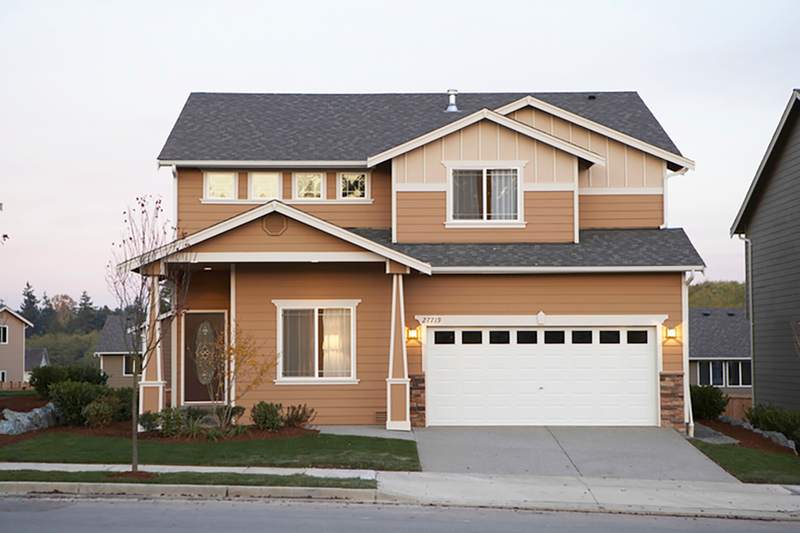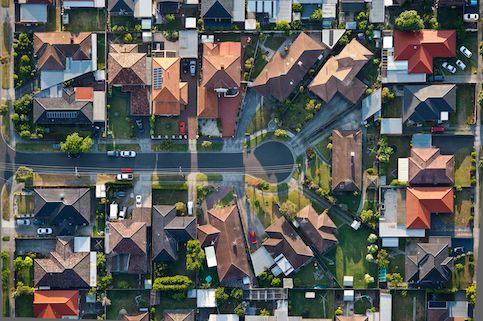Effective Nov. 16, 2025, both Fannie Mae and Freddie Mac no longer require a specific minimum credit score for conventional loan approval. Instead, loan decisions will be based on an analysis of overall credit risk factors.
Conforming conventional loans are the most popular mortgage option in America. It’s offered by private lenders but meets specific federal requirements that make it appealing to borrowers and lenders alike. A limit on how much you can borrow is the most significant requirement for a conforming loan. Updated each year by the Federal Housing Finance Agency, loan limits are essential to understand your loan options and whether a conforming mortgage is right for you.
Key Takeaways:
- The Federal Housing Finance Agency uses median home values to set limits on how much you can borrow with a conforming loan.
- The limits are set each year and include a baseline limit that applies in most of the country and a high-cost limit that applies in counties where homes are more expensive.
- For 2025, the baseline limit for a one-unit single-family is $806,500, and the high-cost limit is $1,209,750.
2025 Conforming Loan Limits
Each November, the FHFA sets the conforming loan limits for the following year. The limits apply to homes with one to four units, with a baseline limit applying to about 95% of counties. Areas with more expensive home values have a higher limit, up to 150% of the baseline limit for the most expensive counties. The limit applies to the amount borrowed, not the purchase price.
2025 Conforming Loan Limits
| Number of Units | Baseline Limit | High-Cost Area Limit |
|---|---|---|
| 1 | $806,500 | $1,209,750 |
| 2 | $1,032,650 | $1,548,975 |
| 3 | $1,248,150 | $1,872,225 |
| 4 | $1,551,250 | $2,326,875 |
How Do Conforming Loan Limits Work?
The conforming loan limit is the maximum you can borrow with a conforming loan. Other requirements include a minimum down payment, minimum credit score and maximum debt-to-income ratio for borrowers.
Lenders can sell conforming loans to Fannie Mae or Freddie Mac, which are government-sponsored enterprises. Selling the loans reduces the risk for the lender, which can use the money from the sale to make additional loans. Fannie and Freddie package the loans they buy into mortgage-backed securities that are sold and traded on secondary markets.
What Is The FHFA?
The Federal Housing Finance Agency is an independent agency that regulates Fannie Mae and Freddie Mac. The FHFA was established following the 2008 housing crisis and sets the conforming loan limits each year. The FHFA’s mission is to keep the U.S. housing finance system stable and liquid.
Standard Limit Vs. High-Cost Area Limit
The FHFA sets the baseline conforming loan limit based on average U.S. home prices. Limits apply at the county level across the United States.
Counties where the median home value is at least 115% of the baseline conforming loan limit are high-cost areas. The limit in those counties is higher, up to 150% of the baseline loan limit. The high-cost area limits also apply to Alaska, Hawaii, Guam and the U.S. Virgin Islands.
You can also use the FHFA’s interactive map to see where the high-cost limits apply.
How Have Conforming Loan Limits Changed?
Housing prices typically appreciate, so the conforming loan limit has increased to match.
Conforming Loan Limits By Year For 1-Unit Homes
| 2025 | 2024 | 2023 | 2022 | |
|---|---|---|---|---|
| Baseline Limit | $806,500 | $766,550 | $726,200 | $647,200 |
| High-Cost Area Limit | $1,209,750 | $1,149,825 | $1,089,300 | $970,800 |
Conforming Loan Limit Examples
Let’s get into how these limits can apply to common home buying scenarios.
For example, let’s say you’re looking to buy a home in Nashville. The home is in Robertson County, where the conforming loan limit for a single-family home with one unit is $989,000. The minimum down payment for a 30-year fixed-rate loan is 3%. You could buy a $1 million home using a conforming conventional loan for $970,000 and a down payment of $30,000.
In a baseline limit county, a conforming conventional loan with a minimum down payment of 3% could be used to buy a home for $831,443.
The conforming loan limit in San Francisco County is the maximum of $1,209,750, so with a 3% down payment, the maximum price you could pay for a home would be $1,247,165.
What’s Your Goal?
Buy A Home
Discover mortgage options that fit your unique financial needs.

Refinance
Refinance your mortgage to have more money for what matters.
Tap Into Equity
Use your home’s equity and unlock cash to achieve your goals.
What If I Need To Borrow More Than The Limit?
You have options if you need to borrow more than the conforming loan limit.
Jumbo Loans
A jumbo loan is a conventional loan that exceeds the conforming loan limits. Non-conforming loans like jumbo loans have no standard requirements – it’s up to the lender, which can’t sell the loan to Fannie or Freddie and is taking all the risk. You typically can borrow up to $2 million with a jumbo loan, but most lenders will require a larger down payment, and you’ll have to meet stricter financial requirements.
Piggyback Loans
A piggyback loan is a second mortgage you take out when you buy your home to ensure your primary mortgage meets the conforming limit or avoid paying for private mortgage insurance. This loan can be a home equity loan or a home equity line of credit. It’s important to know that you’ll need to make payments on the second mortgage in addition to payments on your primary loan. Piggyback loans typically also come with higher interest rates than primary mortgages.
Ready To Become A Homeowner?
Get matched with a lender that can help you find the right mortgage.
Pros And Cons Of Conforming Loans
Let’s look at the advantages and disadvantages of conforming loans.
Pros
Keeping your mortgage within the conforming loan limits has real benefits, including:
- Lower interest rates. Lenders are more comfortable offering a lower interest rate on conforming loans because they are less risky and can be sold to Fannie or Freddie.
- Lower down payment. The minimum down payment on a conforming loan is 3%. Government-backed Federal Housing Administration loans require a down payment of at least 3.5%, and jumbo loans typically need at least 10%.
- Lender preference: Traditional lenders prefer to work with home loans that fall within the conforming loan limits because they can sell them to Fannie Mae or Freddie Mac.
- No residency restrictions: Conforming loans aren’t restricted to primary residences. This means that if you’re in the market for a second home or investment property, you may be able to do so using a conforming loan.
Cons
Conforming loans also have downsides to consider, including:
- Loan limits. Conforming loans can limit your options by capping how much you can borrow.
- Stricter eligibility requirements. You’ll need a credit score of at least 620 to get a conforming loan and a DTI ratio below 50%. Government-backed loans have more lenient requirements: The minimum credit score for an FHA loan is 500 with a 10% down payment or 580 with 3.5% down.
- PMI. If you take out a conforming loan with a down payment of less than 20%, you must pay for PMI. This coverage protects the lender if you stop making your mortgage payments. You’ll need to pay PMI until you have at least 20% equity in your home.
The First Step To Buying A Home
Find a lender that will work with your unique financial situation.
FAQ
Here are answers to common questions about conforming loan limits.
The Bottom Line
A conforming loan meets the criteria to be sold to both Fannie Mae and Freddie Mac. One of the most important requirements is the conforming loan limit. These limits are determined each year by the FHFA and are decided in large part by the average home value in the U.S. There are many benefits to getting a conforming loan, including a lower total cost of borrowing and being able to work with favorable lenders.
Victoria Araj contributed to the reporting of this article.

Rory Arnold
Rory Arnold is a Los Angeles-based writer who has contributed to a variety of publications, including Quicken Loans, LowerMyBills, Ranker, Earth.com and JerseyDigs. He has also been quoted in The Atlantic. Rory received his Bachelor of Science in Media, Culture and Communication from New York University. He also completed the SoFi/Coursera Fundamentals of Personal Finance Specialization consisting of five courses: Introduction to Personal Finance, Saving Money for the Future, Managing Debt, Fundamentals of Investing, and Risk Management in Personal Finance.












